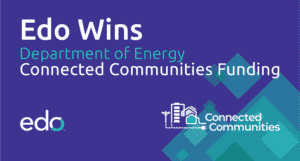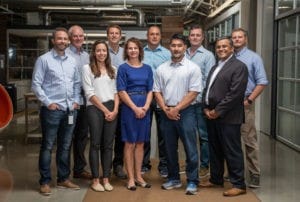The Spokane EcoDistrict at South Landing
Avista chose to blaze a new path in Spokane when the city planned a new pedestrian bridge to expand its thriving University District. The utility owned the land on the south landing of the bridge with plans to construct a substation to serve the growing neighborhood.
The Spokane South Landing EcoDistrict elevates buildings from blind energy consumers into valuable assets that serve the grid. An innovative, all-electric central energy plant transforms the development into a shared-energy EcoDistrict that serves the Morris Center and its neighboring zero-energy/zero-carbon Catalyst building.
The South Landing EcoDistrict is designed for grid-optimal operations. Thousands of IoT sensors backed by machine learning algorithms provide Edo, the EcoDistrict operator, and Avista with the visibility needed to balance onsite energy generation and demand with overarching grid operations.
If the grid needs more supply, energy consumption within Catalyst decreases, freeing up any renewable energy generation and stored electrical and thermal energy supply within South Landing. If the grid can’t absorb more supply, excess energy from the grid is moved to the on-site electrical and thermal storage systems.
Edo at South Landing
Edo deploys cross-meter communications and an analytics platform that synchronizes the EcoDistrict central plant and buildings with the grid, while maintaining occupant comfort. Edo:
• Establishes building and energy asset operating parameters and procedures.
• Formalizes a plan for flexibility opportunities into operating realities.
• Implements flexible load management, while maintaining occupant comfort.
The Ecodistrict demonstrates Edo offerings and the unique value delivered to utilities, buildings, and third-party asset owners.
Highlights
- Developed as a partnership between the utility, developer, and operator
- Innovative, all-electric central utility plant
- Two existing buildings totaling 200,000 square feet
- One of the largest zero-energy and zero-carbon outcomes
- Energy use intensity (EUI) in the 20s
- Thermal hot water and phase change tanks, battery energy storage system, air source heat pumps, heat recovery chillers
- >500 kW of solar PV
- IoT sensors, data visualization and machine learning
- Restructured tenant leases and occupant engagement/education



